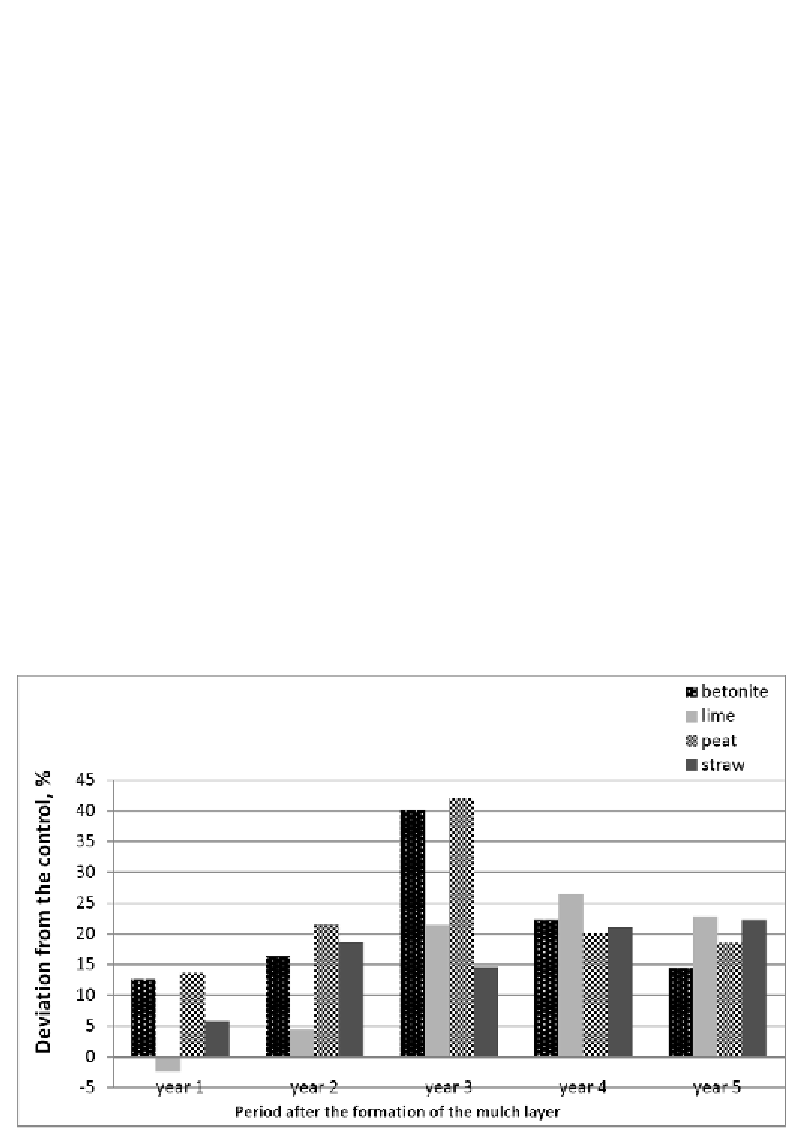Agriculture Reference
In-Depth Information
top of the plow horizon (the aggregation rate increased from 2.3 units in the control to 17.0
units when 8 t/ha of lime was incorporated in the soil layer of 0-5 cm) and a slight decrease in
its density (5.3% on average).
It is worth noting that lime showed very high efficiency when it was applied in
combination with bentonite clay. In terms of the influence on the content of productive
moisture in the plow horizon, this combination of mulches was as efficient as the organic
mulches, but the effect was more stable and lasted longer.
4. Effect of Mulches on Crop Yields
The most objective comprehensive assessment of the effect mulching has on soil
properties is based on an increase or decrease in crop yields. It has been found that all
mulches selected for the study caused a statistically significant yield increase. The increase
varied by years, since it depended on the type of the mulch material, biological characteristics
of crops, weather conditions during the vegetation period and the post-mulching period
(Figure 8).
The most consistent positive effect on yields was seen when using peat as mulch. It
caused an increase in the crops yield by the average of 23.1 % compared with the control
(without mulches) during the five years of observation. The effect of this mulch material
lasted for all five years of observation, without significant variations over the years. The
exception was the third year of its use, when the crop yield exceeded the control by 42 %
during the vegetation period. This is explained by the weather conditions, namely the
extremely dry June, which enabled us to see the positive effect of mulching most clearly.
Figure 8. Effect of mulches on the crop yield.

Search WWH ::

Custom Search